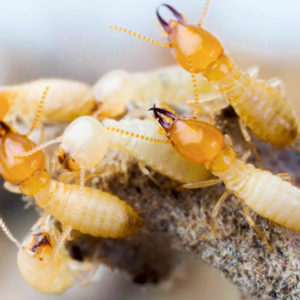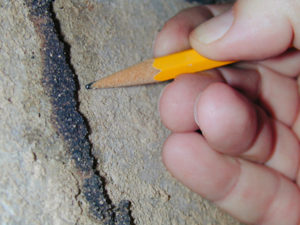![]()
What is a CL-100 Inspection and why do I need it?
If you’re purchasing a home in Charleston, South Carolina, a CL-100 Inspection will be required by your lender in order to close. So what is this inspection and what does it entail? The CL-100 Inspection is also called a Termite Inspection, and the report is called the Official South Carolina Wood Infestation Report.
The purpose of the inspection is to check for:
1) Visible evidence of active, or a previous infestation of subterranean termites or other wood-destroying insects (like powder post beetles or carpenter bees, for example).
2) Visible evidence of whether there has been prior subterranean termite treatment.
3) Below the first main floor, if there is the presence or evidence of: active wood- destroying fungi (which has a wood moisture content of 28% or above), or if there is the presence of wood-destroying fungi that is inactive (less than 28% wood moisture content). Fungus will not grow if there isn’t enough moisture, so it is important to find the direct cause of the moisture and work to resolve the problem.
4) Any visibly damaged wooden members below the main first floor of the home (columns, sills, joists, plates, door jambs, headers, exterior stairs, porches, or fungi damage below the first floor). If we find any of this to be true, we will list IN DETAIL the damaged areas.
We will go under and around the house to check for all of these items and circumstances. If we find that the damage noted in #4 above is damage enough to warrant further investigation- we will recommend that a licensed contractor
or structural engineer licensed or registered with the SC Department of Labor, Licensing, and Regulations, will need to provide a letter on letterhead stating to the effect that either the home does not need repair, and that the home is “structurally sound”, or that repairs have been made, and it is “structurally sound”. Either of those circumstances will need to occur in order to obtain a “clear CL-100”. In fact, Your lender, when purchasing, will require a copy of this letter. It will be needed in order to close.
What happens if wood infestation is identified?
Homeowners are generally hesitant to disclose to prospective buyers that their home is damaged by termites. For many, the words “termite damage” produces visions of flying sawdust as tiny insects with large teeth gnaw their way through a home. Fortunately, this image is far from true.
 In the time it takes most people to decide about treatment, even if a substantial infestation of termites is present, only a minor amount of further damage will happen.
In the time it takes most people to decide about treatment, even if a substantial infestation of termites is present, only a minor amount of further damage will happen.
Many South Carolina houses that are more than 10 years-old can usually expect to have some wood-destroying organism damage. Damage that has been appropriately fixed, or decided to be not structurally important, should not get in the way of the house being sold.
Does a wood infestation report guarantee an absence of termites?
No. This report is basically an explanation of any noticeable activity or damage created by termites or other wood-destroying creatures. The inspection is established on careful visual inspection of freely accessible spaces and by sounding or searching. A skilled building expert should be consulted to define the amount of damage and if repairs are needed. Most Pest Control Operators are not builders.
Oftentimes, the Wood Infestation Report is incorrectly known as a “clearance letter” or a “termite letter.” It is not a “clearance letter” in that it does not inevitably “clear” a structure. It is not a “termite letter” because it focuses on more than just termites.
Quick Links
- Home Inspection
- Pest/CL-100 Inspection
- Mold Remediation
- Property Conditions Assessments / Commercial Inspections
- Water Damage Restoration
- Radon Mitigation
- Meth-Lab Decontamination
- Contact Us
Where we Service
We primarily service the South East South Carolina area, but can cover any portion of South Carolina if requested. Additional locations of coverage: Charleston, Myrtle beach, Columbia, Moncks Corner, North Charleston, Summerville, Goose Creek, Ladson and surrounding areas.


